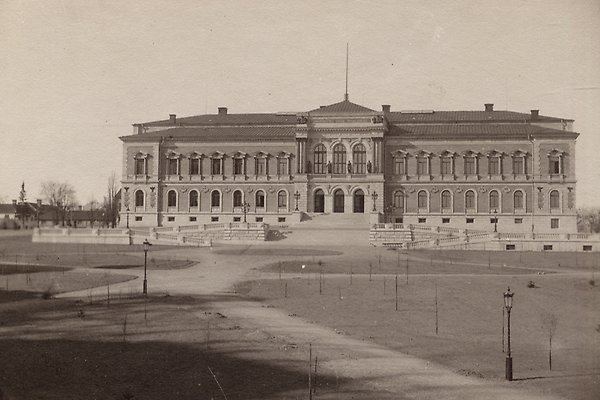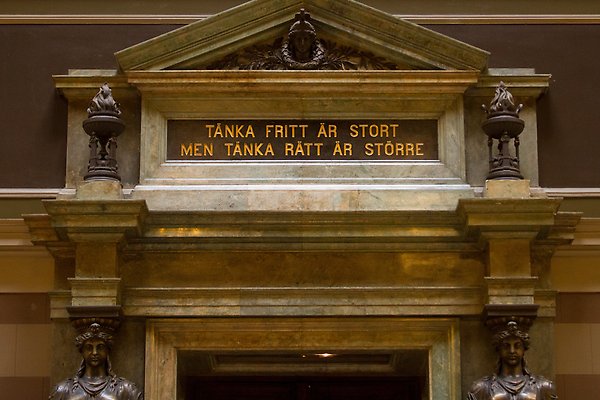History of the University Main Building
The University Main Building was built in the 1880s. At the time, it housed all the University’s activities.
Since then, the University has grown a lot and today it is spread throughout the city. The University Main Building is still used for lectures, conferences, concerts and university ceremonies.

Short history
The parliament had allocated funding, and King Oscar II laid the cornerstone in pouring rain on a spring day in 1879. The site was formerly occupied by a large academic riding stable, which was torn down for the new edifice. On 17 May 1887 the building was inaugurated at a festive ceremony. The architect was Herman Teodor Holmgren.
What he created was a stately structure in a sort of Romanesque Renaissance style. Despite much modernising and functional changes, we still experience essentially the same building that visitors encountered in the 1880s. Its magnificent and spacious foyer with its light cupolas and the Grand Auditorium, which seats about 1800 people, gives us a good idea of the best of 19th-century Swedish architecture. Above the entrance to the Auditorium we read the often-quoted words of the 18th-century philosopher Thomas Thorild: “To think freely is great, but to think rightly is greater.”
The erection of the building constituted a great step forward in terms of teaching. The building offered a number of classrooms, many of which are still in use. Previously teaching had been carried out in the Gustavianum, in two cold, unheated rooms.
The University Main Building is also the venue for many academic ceremonies. Each year between 15 and 25 new full professors are solemnly inaugurated in the Grand Auditorium. Another ceremony steeped in atmosphere and tradition is the conferring of degrees, when the year’s recipients of doctor’s degrees receive their doctor’s hat or wreath of laurels – a tradition harking back to the year 1600.

The University Building in 1887. The place that is today the University Park had previously been a garden, but due to the creation of the University Building, it went through a radical change. The University, led by botany professor Thore Fries, chose to plant trees of various kinds.

The University Building around 1890. The park has started to grow and the Geijer statue is erected.

The Grand Auditorium, which is also a banquet hall, gives us a good picture of the best in Swedish 19th-century architecture. Photo: Danish Saroee

In gilded letters over the entrance to the auditorium it says: “To think freely is great, but to think rightly is greater”. The words are a quote from the jurist Thomas Thorild who studied in Uppsala in the 18th century. He was a provocative and controversial thinker who sparked debate in his time.

On the ground floor, until a few years ago, the university's board met in the so-called “konsistorierummet”. The photo is from the early 1900s.

On the upper level there is the grand chancellor's room where the Vice Chancellor receives prominent guests. On the walls of this room, as well as in the other rooms next to it, hang many portraits depicting kings, cultural figures and above all professors who have worked at the university over the centuries.
